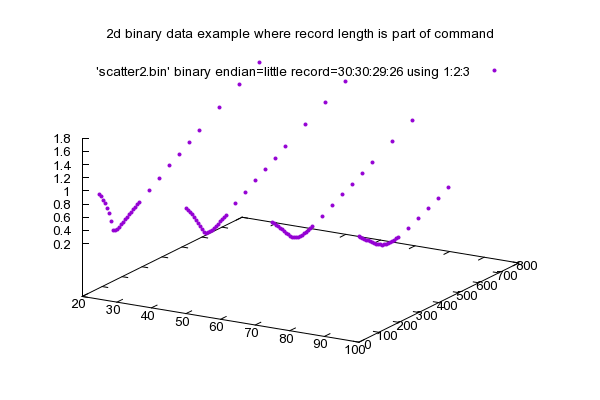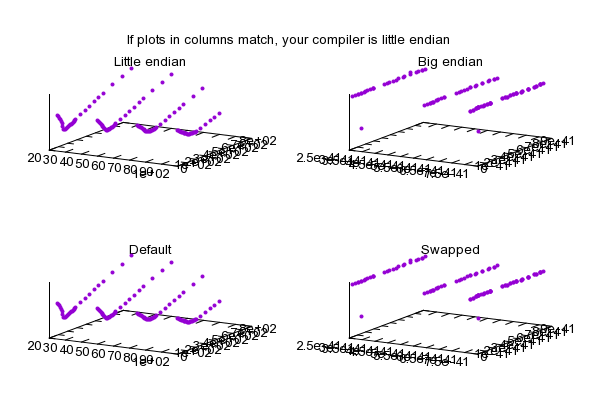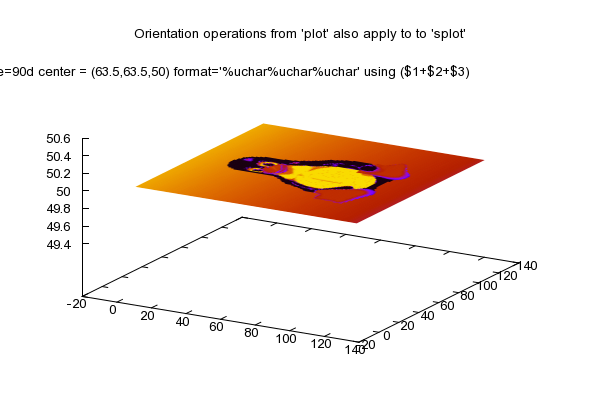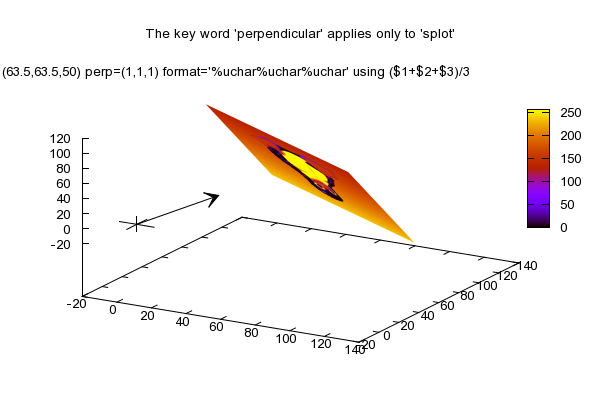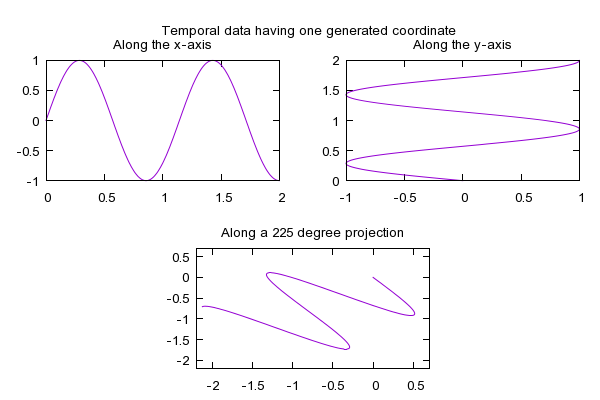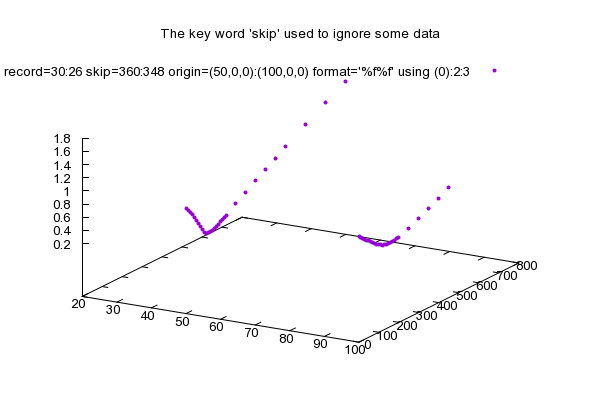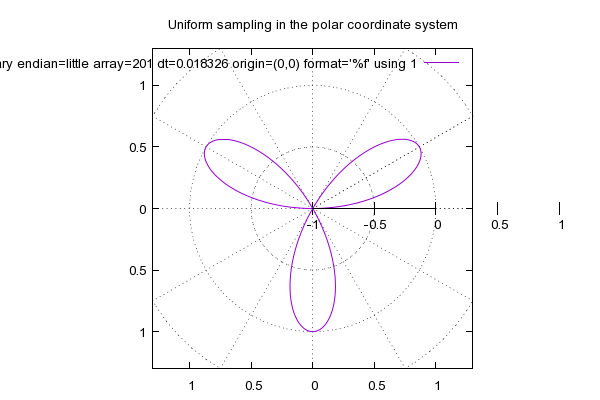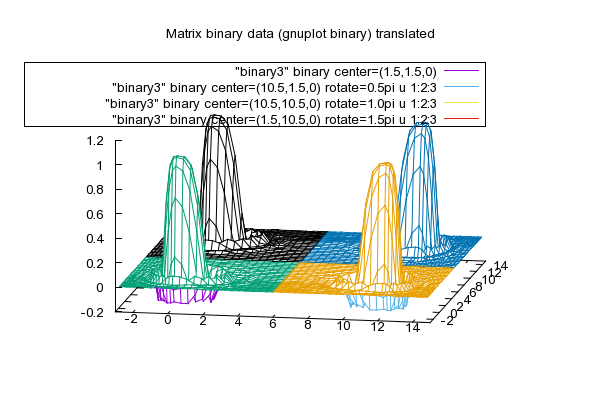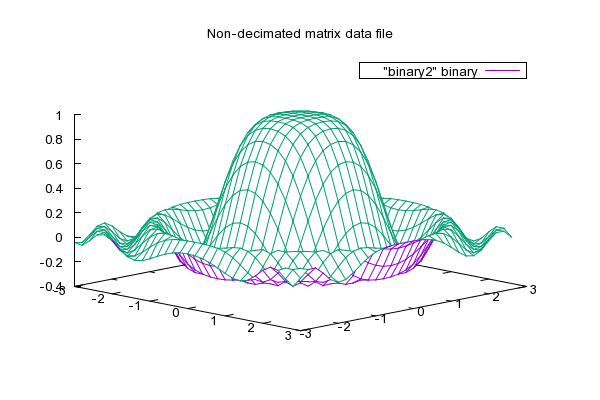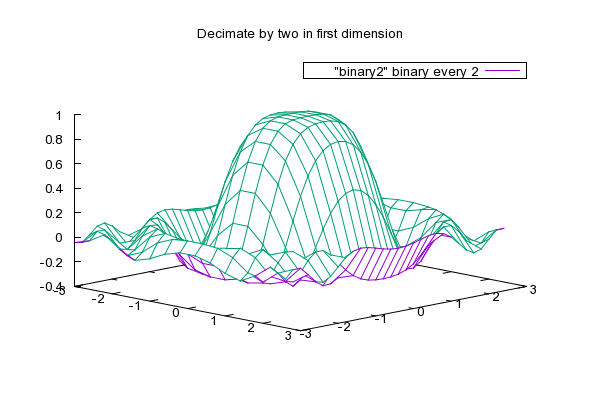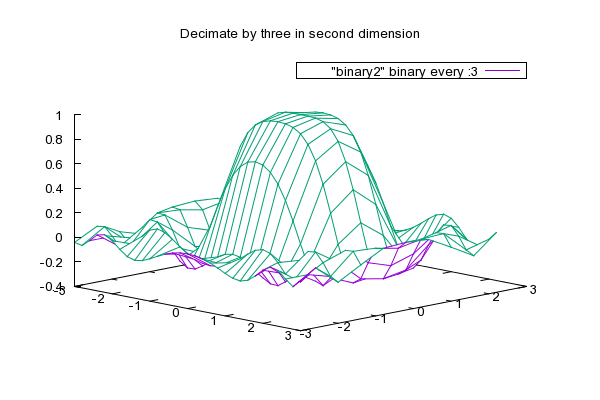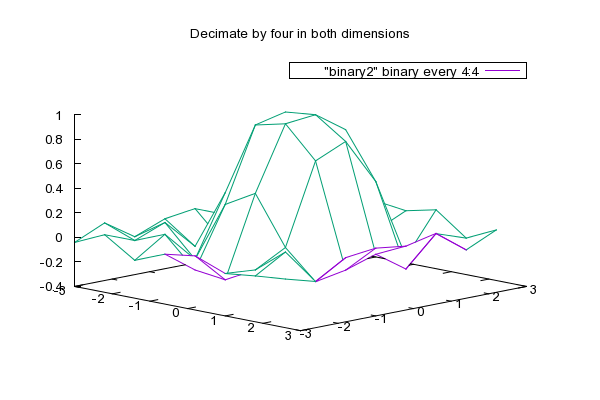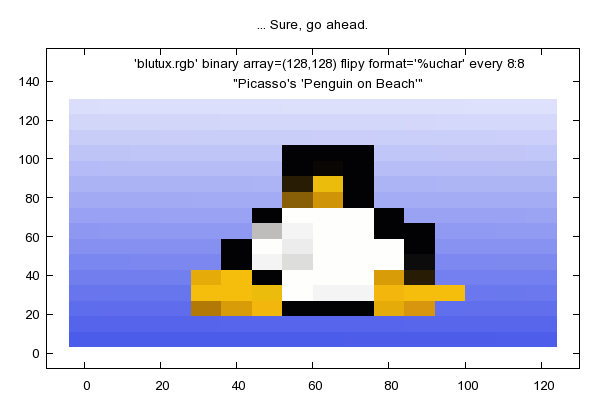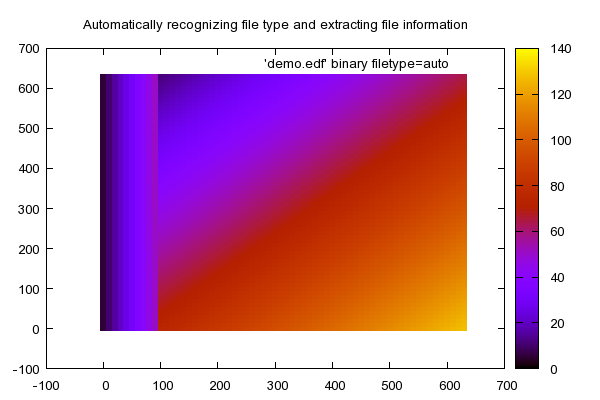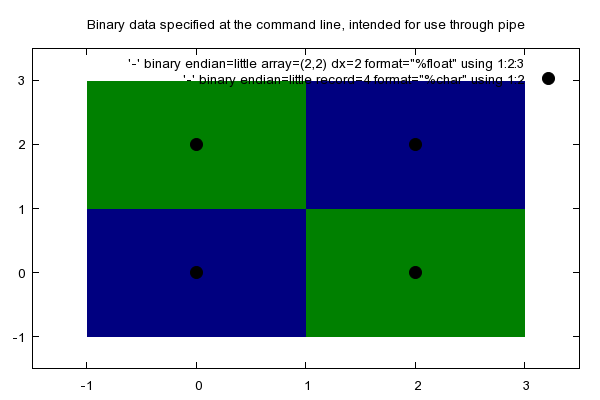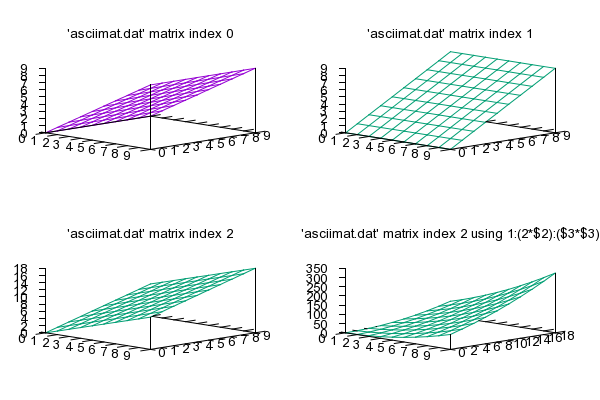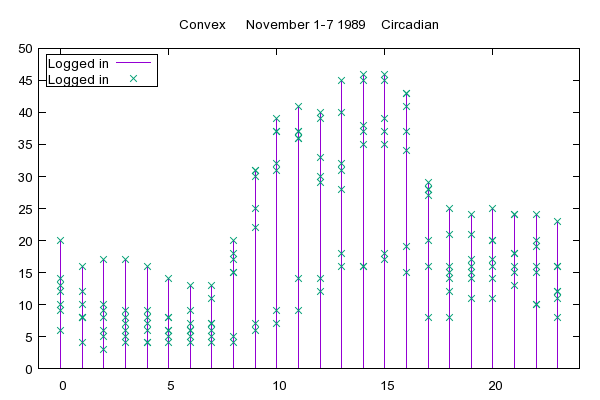
# demo for plotting images using pixels and binary 2d data
#
# This demo can be used for terminals supporting image display.
# Currently supported are: X11, Aqua, postscript, png, pdf, svg,
# (e)pslatex, pstex, emf, wxt.
# Prepared by Dan Sebald
# History:
# - Nov 2006 EAM: split into two files
# - 9.23. 2003 ds: redone in response to discussion list feedback
# - 5. 3. 2003 ds: 1st version
# Repeat of the 'using.dem' demo, but with binary 2d data. 'using.bin' is
# in the format int32, int8, int16/100, int8, int16/100, int16/100.
#
print ""
print "Not only can the 2d binary data mode be used for image data."
print "Here is an example that repeats the \`using.dem\` demo with the"
print "same data, but stored in binary format of differing sizes. It"
print "uses different format specifiers within the \'format\' string."
print "There are machine dependent and machine independent specifiers,"
print "display by the command \'show datafile binary datasizes\':"
print ""
show datafile binary datasizes
print ""
set title "Convex November 1-7 1989 Circadian"
set key left box
set xrange[-1:24]
plot 'using.bin' binary format='%*int32%int8%*int16%int8%*int16%*int16' using 1:2 title "Logged in" with impulses,\
'using.bin' binary format='%*int32%int8%*int16%int8%*int16%*int16' using 1:2 title "Logged in" with points
Click here for minimal script to generate this plot

